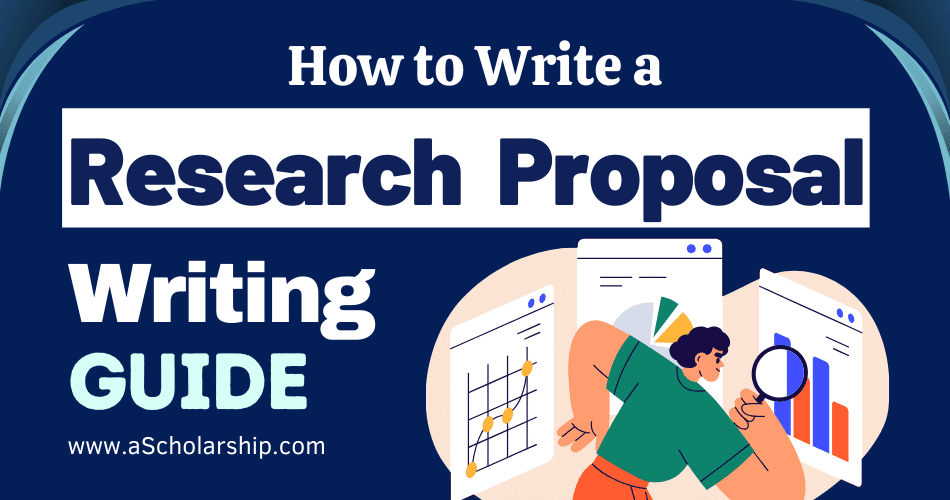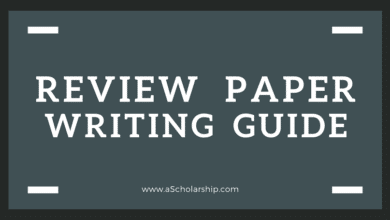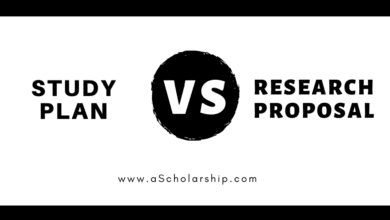Research Proposal Writing in 2024 – Format, Elements, Sections, Writing Guidance
How to Write a Research Proposal in 2024?

The Research Proposal is a detailed document of your proposed research project with clearly stated objectives, a supported literature review, expected challenges, a study execution plan to achieve milestones, and valid scientific citations.
Drafting a compelling research proposal is essential to persuade the reader of the project’s worthiness and demonstrate the candidate’s ability to execute it effectively. The proposal must present a clear research plan to attain predefined objectives. The inclusion of irrelevant information leads to confusion and potential rejection. The proposal must maintain a sharp focus on the subject matter. Quality research proposals prioritize qualitative selection of citations to support claims, rather than adding irrelevant literature solely to inflate word count [Ref 1, 2, 3].
Research Proposal Format and Sections
A research proposal is a detailed and persuasive document that showcases the value and feasibility of your research project, along with your capacity to execute it effectively. It’s structured to guide the reader through a clear plan towards achieving specific research objectives. However, many proposals are rejected due to the omission of crucial sections, as noted in previous studies.
This guide aims to delineate the construction of a well-organized research proposal, highlighting the critical elements that should be included. A comprehensive research proposal should encompass the following sections: Title, Abstract, Introduction, Statement of Objectives, Literature Analysis, Research Methodology, Research Plan, Budget Estimates, Details of the Research Team, Funding Sources, Acknowledgments of Collaborators, and References. Each section plays a pivotal role in presenting a coherent and convincing case for the proposed research.
Sections of a Research Proposal
An effective research proposal starts with a concise and clear title that immediately conveys the essence of the project. The introduction should provide a thorough and supportive literature review that clearly outlines the research problem, objectives, and the study’s significance. This section should highlight key issues and set the stage for the proposed research.
The proposal must comprehensively cover all critical aspects of the research project, offering sufficient details for the reader to assess its value and feasibility. Writers should stay abreast of current trends and terminology in their field to ensure the proposal reflects the latest scientific knowledge.
Additionally, it’s crucial to clearly define the research design. This involves deciding whether the study will be descriptive, aiming to accurately describe characteristics of a phenomenon, or explanatory, seeking to understand cause-and-effect relationships. The chosen research design should then be reflected throughout the proposal, ensuring that the methodology and objectives align with the overall research approach. [5].
Writing a Research Proposal for Scholarships in 2024
When writing a research proposal, particularly for scholarships in 2024, it’s essential to address six key aspects regardless of your research field or methodology:
- Justification for Research: Explain why your chosen topic requires investigation.
- Significance of Findings: Highlight the potential impact or importance of your research results.
- Research Methods: Outline the methodologies you plan to employ in your study.
- Research Objectives: Clearly state what your research aims to achieve.
- Anticipated Challenges: Identify possible obstacles you might encounter and how you plan to address them.
- Funding Needs: Specify the financial requirements for conducting your research.
Prior preparation and thoughtful deliberation are crucial in developing a research proposal:
- Rejection of Underprepared Proposals: A hastily prepared and poorly articulated proposal is likely to be rejected, as it reflects a lack of thoroughness and dedication.
- Benefits of a Well-Prepared Proposal: A meticulously planned proposal aids in visualizing and managing the project, from the initial planning stages to the execution and monitoring of fieldwork.
- Perception of Unprepared Proposals: Proposals that lack depth and preparation not only appear substandard but also convey a lack of commitment to the research endeavor.
- Significance in Scholarship Applications: In the competitive realm of scholarship grants, a well-crafted research proposal can be a critical determinant in securing funding, standing out in a field of numerous applicants
13 Elements of the Research Proposal: Research Proposal Outline
When crafting a research proposal for any purpose, whether it’s for an academic project in an educational setting, securing grant funding, or convincing an organization to initiate a scientific study, it’s crucial to begin with a clear understanding of the proposal’s main idea and purpose.
This foundational understanding shapes the structure of your proposal. The following 13 elements represent a complete framework for a general research proposal. Depending on specific needs and requirements, some of these sections may be modified or omitted:
- Title: A concise and descriptive headline for the research project.
- Abstract: A brief summary of the proposal, including the main objectives and approach.
- Keywords: Relevant terms that encapsulate the core themes of the research.
- Introduction: An overview of the research topic, its context, and significance.
- Statement of Objectives: Clear articulation of the research goals and what the project aims to achieve.
- Literature Analysis: A review of existing research relevant to the topic, demonstrating the proposal’s foundation in current knowledge.
- Research Methodology: Detailed description of the methods and techniques to be used in the research.
- Research Plan: A comprehensive plan outlining the research process, including timelines and stages.
- Estimated Budget: A financial plan detailing the expected costs and resources required.
- Research Team Particulars: Information about the team members, their roles, and qualifications.
- Funding Source: Identification of potential funding sources or current sponsors.
- Co-worker Acknowledgments: Recognition of collaborators and contributors to the research project.
- References: A list of all the sources cited in the proposal, formatted according to relevant academic standards
Write the Title of Research Proposal:
The title of a research proposal is a critical component, serving as the initial point of engagement. It should succinctly and accurately encapsulate the essence of the proposed research. A well-chosen title offers a clear and concise overview of the research project or study, enabling the reader to immediately grasp the central focus.
Research indicates that many proposals are rejected due to titles that are either overly lengthy or misrepresent the true scope of the research, leading to confusion or misinterpretation. Titles that contradict or mislead can significantly undermine the proposal’s credibility, often resulting in rejection.
In cases where a title is extensive but still meaningful, reviewers may advise the candidate to modify it to better align with the project’s core objectives. Such revisions can transform a potentially rejectable proposal into an acceptable one. Furthermore, it is advisable to revisit and possibly adjust the title once the research is underway, ensuring it remains reflective of the study’s evolving nature and scope [3].
Writing the Abstract of the Research Proposal:
The abstract of a research proposal is a concise summary encapsulating the proposal’s essence. While ideally around 300 words, its length is often dictated by the guidelines of the respective academic institution, company, or organization where it is being submitted.
An effective abstract typically does not include citations, as its purpose is to provide a standalone overview of the proposal. It should succinctly present the central research topic, explain the rationale for selecting this topic, outline any hypotheses, and describe the proposed research methodology. The abstract should be self-contained, offering a coherent snapshot of the proposal without necessitating references to the detailed content that follows in the main body of the proposal.
Selecting Appropriate Keywords for Your Research Paper:
Once your research paper is accepted by an institution, it becomes an integral part of the institution’s database. To facilitate efficient categorization and retrieval of research papers, many institutions and companies require authors to provide specific keywords. These keywords serve the purpose of classifying your research paper into relevant categories or niches, making it easier for them to organize and locate the research paper within their database.
Keywords also play a crucial role in indexing your paper within niche-specific search engines, especially when the paper is publicly available. Additionally, they aid individuals seeking category-specific records in their search endeavors. Therefore, it is highly recommended to include a well-thought-out keywords section in your research paper. Typically, including three to five keywords along with your research paper document is considered sufficient for this purpose
Write the introduction of the Research Proposal:
The research proposal’s introduction serves as the foundation for understanding the background of the proposed research. It aims to establish a context for the research topic, enabling the reader to connect it with prior research in the same field.
In this section, we clarify why research is essential for the chosen topic and how this study can impact the reader’s understanding of the subject that motivated the proposal. We approach the introduction in a storytelling yet scientifically rigorous manner, framing the issues that prompted the proposal’s initiation. It is crucial to incorporate relevant citations judiciously, as an excessive use of unrelated citations can hinder reviewers in finding convincing references, potentially resulting in proposal rejection.
What are the elements of an introduction section in the Research Proposal?
The introduction in a scientific research proposal should generally include the elements listed below:
-
- A statement on larger research issues in unambiguous terms as well as the purpose of the study.
- A contextual background to signify to the prospect the importance and necessity of research on the issue.
- An explanation of the rationale behind the choice of the proposed research topic
- A convincing discussion on the benefits that will accrue from the proposed research.
- An identification of the major variables of the proposed research topic.
- A statement of the hypothesis and research questions.
- An assertion of the limitations and probable obstacles to the proposed research.
Writing Statement of Objectives in Research Proposal:
The statement of objectives section of the research proposal lists the goals of the proposed research project. These could be general goals or specific goals. The statement of the objective has to be precise.
It is recommended to write the objective statement in one sentence to make it clear which makes it look more convincing to the reader. Meanwhile, as if the statement is clear then it gets the attention of the reader to read more about it by exploring the proposal in depth.
Highlight the Novelty of Your Proposed Research Proposal
If the candidate has not mentioned the novelty of the proposed research then it will account for one of the most common mistakes observed by the reviewers of research proposals. I can say from my experience that the Novelty of the proposed research study is the heartbeat of your research proposal. One must put great effort into writing it down with valid supporting citations
What are the Rules for Writing a Statement of Objectives?
When writing the statement of objectives one should keep the following in mind;
-
- State the objectives precisely and clearly.
- State a set of objectives that are achievable within a specific timeframe.
- Avoid long lists of objectives or objectives that are too extensive in their scope.
- Stated objectives should be quantifiable and realistic.
How to do Literature Analysis while Writing the Research Proposal?
The analysis of the literature section in the research proposal is meant to make available sufficient background information that will aid the prospect in better understanding the larger research issue or problem at hand. The section should provide an indication of research that has been conducted on the issue as well as any ongoing research.
This will help in placing the proposed research topic from the right perspective. This will also help the prospect ascertain that neither has the research topic being proposed in the research proposal been investigated before nor is it being currently investigated by some other researcher.
How to start the Literature Review Report Writing?
The literature review section should be brief and relevant to the proposed research topic. It should include citations and references. It should fulfill the following functions;
-
- Establish your knowledge of the research issue.
- Illustrate your ability to conduct a critical analysis of the literature on the research issue.
- Establish your awareness of the existing theory and research related to the research issue in question.
- Persuade the prospect about the substance and significance of the contribution that the proposed research is likely to make to the literature on the research issue.
How to Study Plan in Research Proposal?
The study plan here refers to the scheduling and organizing of study times to aim for achieving the set goals. The research methodology section of the research proposal is of particular significance as it informs the prospect of the approach/methods that you will take in dealing with the research study being proposed. This research methodology section should convincingly prove to the prospect that a certain process can be adopted for the execution of the proposed research in a reliable manner.
It should also state the activities/work that candidates have to put in to complete the proposed research study. Generally, various approaches are adopted in defining the nature of the research study such as descriptive, exploratory, analytical, correlational, casual, inferential, qualitative, and quantitative research techniques. It is the choice of the writer to think about the kind of research design writing style in which the proposal fits well and then outline the necessary sections in the draft.
Research Design Definition and Explanation
Research design is a term used to categorize the nature of a researcher’s study, specifically based on the experimental and methodological approaches and the overall plan employed.
Within a research proposal document, the following components of research methodology should be considered:
- Design of the Proposed Research Study: Clarify whether the study design is descriptive, case-study, or cross-sectional. Specify whether data collection involves participant questionnaires or laboratory experiments.
- Participants/Subjects of the Proposed Research: Detail the participant demographics, sampling methods, and inclusion/exclusion criteria.
- Sample Size Calculation: Explain how the sample size is determined based on the nature of the study.
- Instrumentation: Describe the instruments and tools used in the study, their reliability, and the rationale for their selection. This includes the types of questionnaires employed.
- Data Collection Procedures: Outline the step-by-step process of data collection, including duration.
- Data Analysis and Interpretation: Specify the methods, software, statistical techniques, significance levels, and confidence intervals for data analysis. Dummy tables can be included to illustrate the data interpretation process.
- Ethical Considerations: Address ethical concerns, especially when the research involves invasive procedures on human or animal subjects. Mention the submission of the research proposal to relevant ethical committees at both your workplace and the proposed research location
What is the Research Plan?
The research plan in a proposal outlines the timeline for conducting research on the chosen topic. It details how the project will be initiated, progress, and reach its goals. This section includes:
- A timeline for the research period.
- Scheduling activities such as literature review, procurement, experimentation, data analysis, and report writing.
- Setting research milestones.
- Utilizing visual aids like Gantt charts or timeline graphics to enhance presentation and reader engagement.
A well-structured schedule ensures effective project monitoring and is often visually supported for reader interest
Funding Requirement Proposal
The specifics of working out the research funding requirements of the research proposal as applicable to all academic disciplines have been discussed here. The rudiments of writing a research proposal differ across various academic disciplines. This is because research on epistemological projects is based upon a completely different set of assumptions than that on practical projects. However, research proposal writing as discussed here is a broad introduction to the subject and is applicable across all academic disciplines.
Irrespective of whether your project is epistemological or practical in nature, the funding agencies and their reviewers would expect that the research proposal provides a research plan, assumptions, research queries, and results. Moreover, visualizing the project in these terms could reveal previously overlooked aspects of the project to you. Hence, the art of writing a research proposal is a useful tool to possess.
Writing a research proposal is not the linear process of idea-proposal-award that it is, but rather has a circular course of action that begins and ends with an idea/goal as explained in the diagram given below.
How to Propose Funding Requirements?
You may choose to include the budget or funding or grant requirement section in your documents such as the research proposal, study plan, or other documents. In all these documents, one needs to set a separate section on writing the cost estimation requirements to carry out the research study or the job being proposed.
In this section, the candidate needs to break down each and every expected cost to provide a clear understanding of your finance requirement. The project cost may be expanded into as many as possible subcategories such as material cost, manpower budgeting, machinery funding, operational expenses, emergency expenses, and so on. The expansion of the budgeting depends upon the nature of the project being proposed. The candidates may also consider adding a subcategory to include profit-taking/revenue-generation models which must clearly show the initial to running cost, break-even point, and profit expectancy.
The estimated budget section in the research proposal should detail out the budget for the entire proposed project as also the expected sources of finance. The budget should provide an activity-wise or item-wise categorization of costs as well as a justification for each.
How to Write Funding Requirements in Research Proposal?
In a research proposal, the budget section outlines project costs, including tables and justifications. Even if not explicitly required, it’s crucial to explain the budget’s components. Key points to remember:
- Create a comprehensive budget for the entire project, not limited to the grant size. If the budget exceeds the grant, clarify your intention to seek additional funding sources.
- Ensure budget items align with the organization’s guidelines. If not, explain how you’ll cover them in the budget justification section.
- Some universities may require including indirect costs. Use their provided rates and seek approval before adding them to the proposal.
- Overcome personal insecurities about requesting funding by remembering that not asking means not receiving, and a refusal is not the end; you can explore other funding opportunities.
Writing a clear and comprehensive budget section is essential for securing financial support for your research.
How to enlist Research Co-workers in Research Proposal?
The section on research team particulars provides details on the probable research team members and includes the following;
-
- An identification of all the expertise that will be required on the proposed project as well as the team that will work on the proposed research project.
- A schedule of responsibilities for each team member
- The CVs of all the key team members who would be working on the proposed project
- Written participation consent from all the proposed research team members
Identify the Funding Needs, Challenges, and other aspects in Research
Recognizing the project needs/requirements would be the first step you take and the answers to the questions mentioned below could help you get there.
-
- Is the research to be undertaken the pilot or preliminary kind that will lead to the development of a full-fledged research program?
- Is funding required for all, some, or any one of the following; fieldwork, experiments, postdoctoral research, dissertation research, pre-dissertation research, or archival research?
- Is a stipend being sought in order to write a book, refine a manuscript, or write a thesis?
- Is a resident research fellowship with program assistance or other project enhancement resources being sought at an institution offering the same?
- Is funding required for an extensive and lengthy research project that would be conducted over several years and would require the employment of many staff personnel?
The next step would be to deliberate on the project focal point. The points listed below could help you narrow down your choices.
-
- Identify the topic and its importance
- List out the research problems that you are attempting to resolve and the relevance of those problems
- Identify your research hypotheses
- Identify research methods
- Contemplate the significance and importance of your research project
- Consider whether you would prefer the use of qualitative or quantitative research methods or whether you would rather use both.
- Consider whether your research would be the experimental kind or the clinical kind
Once the project needs and focus have been determined, project funding organizations and grant programs can be explored.
What is the White Paper (General Proposal)?
The White Paper is a concise and authoritative report on a complex issue that dictates the philosophy of the issuer about that issue. The White paper helps in understanding a complex problem which enables the person to solve the issue or make a decision based on this document.
Writing a White Paper before drafting the Research Proposal
Since funding is usually sought from various grant programs and project funding organizations, one could begin the process of applying for the same by drafting a research proposal and a research budget that is general in nature. Such a general research proposal is often referred to as a ‘White Paper’. The white paper should address a general academic audience with an explanation of your proposed project. Research proposals that are to be submitted to various programs and organizations have to be modified to reflect the specific rules and guidelines of each program or organization.
What to avoid while writing a Research Proposal?
The top priority while composing a scientific research proposal must be to avoid the use of unnecessary information and statements that one can not prove with valid citations.
The research proposal is often flawed due to errors that are avoidable such as;
-
- Objectives that do not adequately reflect the title of the research proposal
- An absence of a literature review/provision of references
- Broad-based or over-ambitious objectives
- Poor scheduling of activities
- A methodology that has been inadequately described
- An unjustifiedly big/small budget that asks for either too much/too little financial assistance
How to Write Conclusion in Research Proposal?
The conclusion section of the research proposal provides insights on expected study outcomes, information on challenges during the project execution, possible deviations in results with the scientific and societal impact of the study being proposed.
The research proposal and its elements as described above are meant to act as a guide to aid in writing a well-structured research proposal to pitch your project idea in a professional manner. As per previous studies, most of the research proposals lack the necessary sections which in turn results in rejection of a proposal. In this study, we have provided all the essential components that a person must outline to write a well-structured research proposal.
How to Cite reports in Research Proposal?
When the research proposal cites various works within its description, a list of references has to be provided at the end of the proposal. This section of the proposal is generally not counted in the page limits set in the guidelines.
Bibliography (References) section of the Research Proposal
A list of references is prepared by listing out the books, journals, articles, or other documents that you have cited in the research proposal. This list is generally arranged in alphabetical order by the author’s last name. However, there are different styles of formatting references and you should check the guidelines to see if any style has been specified. You could also consult with your mentor on the same or look up the references section of the research articles assigned to you in your reading list. The use of endnote or Mendeley is highly recommended while drafting the research proposal.





